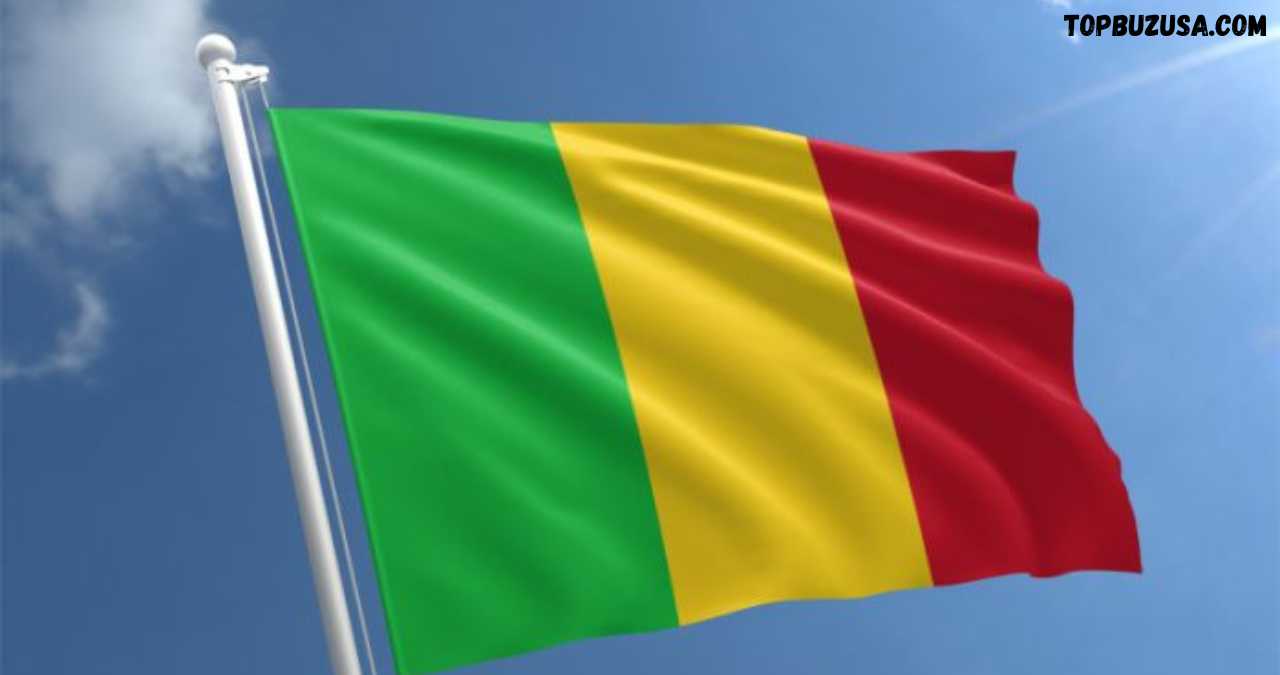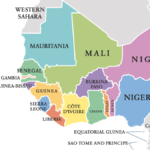Introduction
Mali Flag, a landlocked country in West Africa, is rich in cultural traditions, ancient civilizations, and powerful historical empires. Among its many national symbols, the Mali flag stands out as a visual representation of the country’s identity, struggles, and aspirations. With its bold vertical stripes of green, gold, and red, the flag is not just a banner but a beacon of pride for Malians at home and abroad.
National flags are more than decorative emblems — they are the condensed spirit of a nation’s past, present, and future. The Mali Flag serves this purpose beautifully, embodying the nation’s heritage, values, and dreams through simple yet meaningful design. From its colonial history to its independence movement and beyond, the flag reflects the profound journey of a resilient nation.
This article delves deep into the origins, design, symbolism, and evolution of the Mali flag. You’ll also discover its cultural and political significance, how it aligns with the broader Pan-African movement, and how it is perceived in contemporary society. Whether you’re a historian, a traveler, or just someone curious about African symbolism, this guide offers a comprehensive look at one of West Africa’s most meaningful national symbols.
Historical Background of Mali Flag and Its Symbols
Mali Flag identity is deeply rooted in its historical context. Long before the concept of modern nation-states existed, Mali was home to one of Africa’s greatest empires—the Mali Empire, which reached its zenith in the 13th and 14th centuries. Under the leadership of rulers like Mansa Musa, Mali became a center for trade, education, and Islamic scholarship. Cities like Timbuktu and Gao flourished, leaving a legacy that still inspires pride among Malians today.
However, by the 19th century, the region fell under French colonial rule, becoming part of what was then called French Sudan. This colonial experience drastically altered local governance, economy, and culture. Symbols such as flags during this era were imposed rather than embraced, representing external control rather than local identity. The desire to reclaim indigenous pride and heritage became a strong force as the 20th century progressed.
As the tide of decolonization swept across Africa in the mid-20th century, Malians pushed for independence. In 1959, French Sudan joined with Senegal to form the short-lived Mali Federation, which dissolved soon after. By 1960, Mali declared full independence. This new era demanded new symbols — ones that would honor the country’s roots while signaling a break from colonial oppression. Thus, the Mali flag was born, designed to capture the essence of a free and united people.
The Design and Meaning of the Mali Flag
The flag of Mali is a vertical tricolor made up of three equal bands: green on the hoist side, followed by gold, then red. The simplicity of the design belies the richness of its symbolism. Adopted in 1961 after the country’s independence from France, the flag stands as a visual expression of Mali’s identity, cultural values, and vision for the future.
The green stripe symbolizes agriculture, one of Mali’s economic foundations, and also represents hope and the fertility of the land. Green is deeply tied to life and growth, crucial in a largely arid country where the Niger River brings nourishment and opportunity. For Malians, green is also a spiritual color that embodies renewal and resilience.
The gold or yellow stripe signifies the country’s vast natural wealth, particularly in gold mining, which has been a major industry historically and continues to contribute to the economy today. It also represents the bright African sun, casting its warmth and energy across the land. Symbolically, it can be seen as the light of unity and guidance for the nation.
The red stripe pays homage to those who sacrificed their lives for Mali’s independence. It is a reminder of the blood shed by freedom fighters and the enduring courage of Mali’s people. Red embodies strength, bravery, and the passion that fuels national pride. These three colors are not arbitrary; they are deeply rooted in Pan-African ideology, a movement aimed at uniting African nations and promoting solidarity among African peoples worldwide.
Evolution of the Mali Flag

The story of Mali’s flag is not static—it has evolved over time. When Mali first gained independence, the flag included a Kanaga symbol, a black human-like figure with raised arms, positioned on the gold band. The Kanaga is a sacred symbol among the Dogon people, representing spiritual balance between earth and sky. It was intended to reflect the deep cultural and religious heritage of Mali’s diverse ethnic groups.
However, the inclusion of the Kanaga sparked controversy. While it held significance for some, others felt it did not represent the broader national identity. More importantly, Mali is a predominantly Muslim nation, and Islamic tradition discourages the depiction of human figures in religious or national symbolism. The Kanaga was eventually removed from the flag in March 1961, just a year after it was first adopted.
This decision marked a turning point in Mali’s post-colonial identity formation. It reflected a desire for religious cohesion and political unity, opting for a design that would be more universally accepted by all Malians. Today, the simplified tricolor remains unchanged and is widely accepted as the national standard.
The evolution of the flag—particularly the removal of the Kanaga—illustrates how national symbols can adapt in response to cultural, political, and spiritual needs. It’s a case study in how a country reconciles its past with its present, seeking unity in diversity through shared symbolism.
Usage, Protocol, and Representation
The Mali flag is omnipresent across the nation and is used in government buildings, military uniforms, schools, and during national celebrations. It is a constant visual reminder of sovereignty and the ideals that Mali aspires to. During official events such as Independence Day (September 22), the flag is proudly displayed in ceremonies, parades, and cultural showcases, reaffirming national identity.
In cultural contexts, the flag features prominently in art, music, and fashion. Malian musicians, especially those involved in traditional or revolutionary genres, often use the flag in album covers, stage backdrops, and music videos. It is also used in protest movements, both as a symbol of solidarity and a call for change, further underscoring its role as more than just a national emblem.
There are also protocols and laws that govern the proper use of the flag. For example, it should not be defaced, altered, or used for commercial gain without permission. Schools teach children how to respect the flag, and there are campaigns that educate citizens about flag etiquette. While enforcement may vary, the underlying goal is to maintain the flag’s dignity and ensure it remains a respected symbol of national unity.
In international settings, such as the Olympics or diplomatic missions, the flag serves as Mali’s identity to the world. It conveys a sense of pride and legitimacy, acting as a banner under which all Malians can unite, regardless of ethnicity, language, or religion.
Conclusion
The Mali flag is far more than a simple tricolor—it is a living symbol of the nation’s rich history, hard-won independence, and aspirations for peace and prosperity. From its imperial past to its colonial struggles and modern-day achievements, Mali’s story is woven into every thread of green, gold, and red. Each color carries a weight of meaning, from the lush potential of the land to the sacrifices of its people and the brilliance of its future.
As a symbol grounded in Pan-African ideals and local significance, the Mali flag serves as a unifying emblem for a country that continues to face challenges with strength and dignity. Its journey from the Kanaga to the tricolor speaks volumes about how nations evolve their symbols to reflect changing realities. And yet, the core spirit remains unshaken—a flag that tells the world, “This is Mali.”
FAQs
Why did Mali remove the Kanaga symbol from its flag?
The Kanaga symbol was removed due to religious sensitivities and the desire for a more universally accepted national symbol. As a predominantly Muslim nation, Mali sought to avoid human imagery in national symbols.
How does the Mali flag compare with other African flags?
The Mali flag shares the Pan-African color scheme (green, gold, red) with countries like Guinea, Ghana, and Senegal. These colors symbolize unity, African identity, and anti-colonial struggle.
What do each of the colors on the Mali flag represent?
Green stands for agriculture and hope, gold symbolizes natural wealth and the sun, and red honors the blood shed during the fight for independence.
When was the current Mali flag adopted?
The current version without the Kanaga symbol was officially adopted in March 1961.
Are there any legal restrictions on using the Mali flag?
Yes, the flag is protected under national laws, which prohibit its misuse or alteration and prescribe respectful display during public and official events.
You May Also Read: https://topbuzusa.com/msn-weather/





